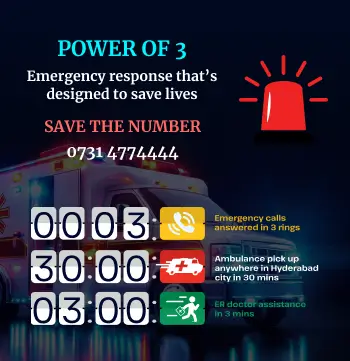Cardiogenic Shock
Cardiogenic shock is a life-threatening emergency that requires immediate medical attention. Cardiogenic shock often results from a heart attack, but other heart problems can also cause it. This article will explore the reasons, cardiogenic shock signs and symptoms, and potential complications of cardiogenic shock. We'll also discuss how doctors diagnose and manage this condition, as well as when to seek medical help.
What is a Cardiogenic Shock?
Cardiogenic shock is a life-threatening condition that occurs when the heart suddenly fails to pump enough blood to meet the body's needs.
The clinical definition of cardiogenic shock includes decreased cardiac output and signs of tissue hypoxia, even when there is adequate intravascular volume.
Cardiogenic shock has specific clinical and haemodynamic criteria:
- Sustained hypotension, with a systolic BP of 90 mm Hg or less for 30 minutes or more, or requiring support to maintain this blood pressure.
- Urine output may decrease to 30 mL/hr or less, and the extremities may feel cold.
- A depressed cardiac index (2.2 litres per minute per square metre of body surface area or less) and an elevated pulmonary-capillary wedge pressure greater than 15 mm Hg.
Causes and Risk Factors of Cardiogenic Shock
The most common cardiogenic shock cause is a serious heart attack. When a heart attack occurs, it can damage the heart muscle, leading to a rapid decline in its ability to pump blood effectively.
However, other heart problems can also result in cardiogenic shock. These include:
- Heart failure, where the heart can't pump enough blood to meet the body's demands
- Arrhythmias or abnormal heart rhythms that can disrupt proper blood flow
- Inflammation of the heart muscle (myocarditis)
- Infection of the heart's inner lining and valves (endocarditis)
- Chest injuries that damage the heart and impair its pumping function
- Blood clots in the lungs (pulmonary embolisms)
- Certain medications may trigger cardiogenic shock if taken in excessive doses
Several factors increase the risk of developing cardiogenic shock. These include:
- Age: People 75 or older are at higher risk
- Racial or Ethnic Backgrounds: Asian Americans and Pacific Islanders, for example, have a higher risk compared to other groups.
- Pre-existing Heart and Blood Vessel Problems: Coronary heart disease and high blood pressure elevate the risk
- Other Factors: These include diabetes, obesity, and a history of coronary artery bypass grafting.
Symptoms of Cardiogenic Shock
Cardiogenic shock has a profound impact on the body, causing a range of severe cardiogenic shock symptoms. These include:
- Chest Pain: The most common cardiogenic shock symptom is chest pain lasting more than a few minutes or coming and going. This pain may feel heavy, tight, or like a squeezing sensation, often described as similar to heartburn.
- Pain Other than Chest Pain: Pain or discomfort in the upper body, left arm, upper abdomen, throat, or jaw.
- Breathing Difficulty: People experiencing cardiogenic shock may also have trouble breathing, accompanied by severe shortness of breath and rapid breathing.
- Cold Sweats: Sweating, particularly "cold sweats," is another typical sign. Patients often report feeling very weak, lightheaded, and anxious.
- Irregular Heartbeat: A fast or irregular heartbeat (tachycardia), as is a weak pulse, is common.
- Low Blood Pressure: Hypotension is a key indicator of cardiogenic shock.
- Other Symptoms: These include confusion or a lack of alertness, fainting, pale skin, urinating less, cool hands and feet, swelling in the belly and legs, and a poor appetite.
Complications
Cardiogenic shock has a profound impact on the body and can result in severe complications if not treated promptly. The condition carries a poor prognosis, with close to 80% of patients dying despite optimal cardiogenic shock treatment. It is the leading cause of death in patients with acute myocardial infarction.
Serious complications of cardiogenic shock are:
- Acute kidney injury
- Liver injury
- Cardiointestinal syndrome (affecting intestines)
- Brain dysfunction and injury, such as cerebral infarction, bleeding, and anoxic brain damage
- Cardiac arrest
- Stroke
- Abnormal heart rhythms
Diagnosis
The diagnosis process includes:
- A thorough medical history, including any recent heart attack symptoms or current medications.
- Physical exam, including checking for cold hands and feet, swelling, pulse and heart and lung sounds.
- Blood pressure measurements
- An electrocardiogram (ECG)
- Chest X-rays
- Blood tests to check for organ damage, infection, heart attack markers and measuring oxygen and carbon dioxide levels
- An echocardiogram to see how well the heart pumps blood and identify any damage from a heart attack.
- Cardiac catheterisation involves inserting a catheter into an artery to examine blood flow and pressure in the heart, helping to identify blocked or narrowed arteries.
Treatment for Cardiogenic Shock
Treatment for cardiogenic shock focuses on 'VIP rules': maintaining ventilation, achieving euvolemia (normal volume of blood and fluid), and administering vasopressors or inotropes.
- Oxygen therapy is immediately provided to increase oxygen delivery.
- Fluid resuscitation is carefully managed to achieve optimal preload status.
- Vasopressors and inotropes (Norepinephrine, epinephrine, dobutamine) play a crucial role in managing cardiogenic shock.
- Medications like blood thinners and antiplatelet drugs help dissolve clots and improve blood flow.
- Percutaneous coronary intervention (PCI) is a non-surgical procedure that opens blocked arteries using a catheter and stent.
- Coronary artery bypass grafting (CABG) may be performed in severe cases to create new pathways for blood flow.
- Mechanical support devices include:
- Intra-aortic balloon pumps (IABP), which help the heart pump blood more efficiently
- Extracorporeal membrane oxygenation (ECMO) devices temporarily replace heart and lung function.
When to See a Doctor
Cardiogenic shock is a life-threatening emergency that requires immediate medical attention. Contact your doctor if you experience:
- Any symptoms of a heart attack, like chest pain that lasts for more than a few minutes or comes and goes
- Shortness of breath, confusion, sweating, and rapid breathing
- Weakness, lightheadedness, or unconsciousness
Prevention
Preventing cardiogenic shock primarily involves maintaining a healthy heart and managing cardiovascular risk factors.
- Quit smoking or avoid passive smoke
- Maintaining a healthy weight as being overweight contributes to other risk factors such as high blood pressure, cardiovascular disease, and diabetes
- Reduce consumption of saturated fat and trans fat products.
- Limit salt consumption to help prevent fluid accumulation in the body, which can strain the heart.
- Reduce sugar to maintain a healthy weight and improve overall heart health.
- Aim for at least 150 minutes of moderate aerobic activity or 75 minutes of vigorous aerobic activity per week.
Conclusion
Taking care of your heart is the best way to avoid cardiogenic shock. This means eating well, staying active, and managing health issues like high blood pressure. If you have heart problems, work closely with your doctor to keep them under control. If you ever feel symptoms like chest pain or trouble breathing, don't wait – get medical help right away. Quick action can save lives when it comes to heart emergencies.
FAQs
1. Can someone recover from cardiogenic shock?
The key to survival is quick resuscitation and coronary artery revascularisation. Even with the best care and latest treatments, the condition still has high mortality rates.
2. What are the four cardiogenic shock types?
Cardiogenic shock can result from different types of cardiac dysfunction:
- Systolic dysfunction
- Diastolic dysfunction
- Valvular dysfunction
- Cardiac arrhythmias
3. What are the stages of cardiogenic shock?
Cardiogenic shock progresses through five stages:
- At risk (A): Heart disease present, but no cardiogenic shock signs
- Beginning (B): Low heart rate or blood pressure
- Classic (C): Need for medical intervention or devices to help blood flow to organs
- Deteriorating (D): Not responding to treatment and getting worse
- Extremis (E): Cardiac arrest requiring CPR, ventilator, and defibrillator
4. How long does it take to recover from this treatment?
Recovery time depends on the severity of the shock and the treatment received. After angioplasty, people usually feel tired for a few days. However, those who have angioplasty during or after a heart attack may need up to six weeks to recover fully. Long-term recovery often involves cardiac rehabilitation and managing underlying heart conditions to prevent future episodes.



